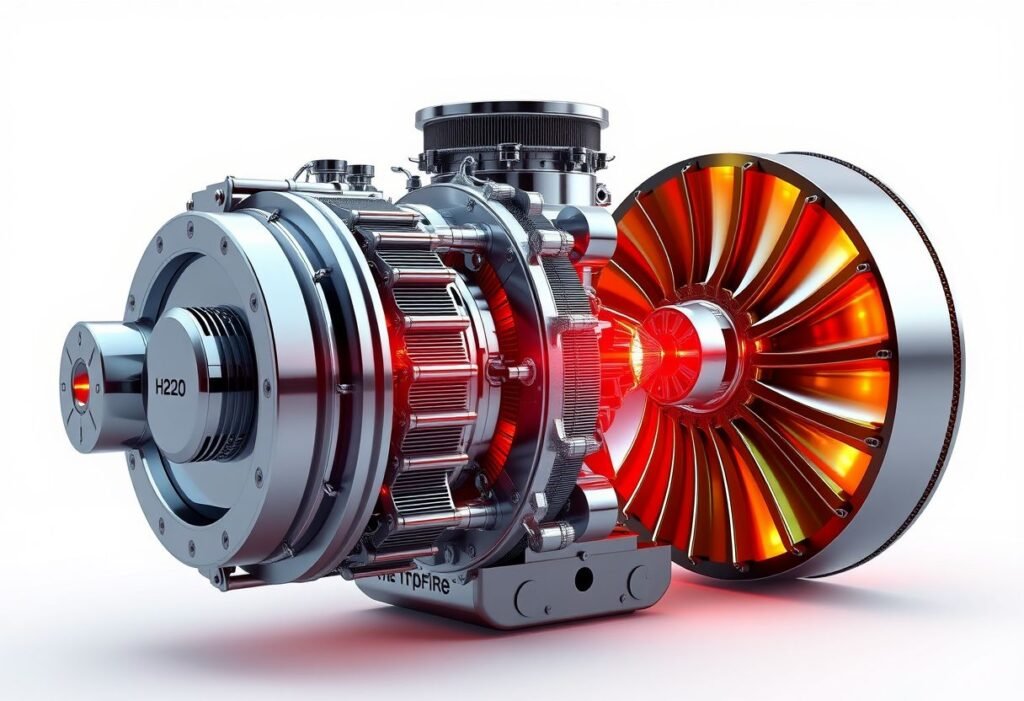The emergence of new engine technologies is redefining efficiency in the automotive sector. The H2Starfire rotary engine represents a significant step forward, promising high thermal efficiency and a clean energy output. This innovation could transform vehicle operations and contribute to environmental sustainability.
Revolutionizing Combustion Technology
The H2Starfire engine, developed by Astron Aerospace, showcases a pioneering approach to rotary combustion engines. With a staggering thermal efficiency of 60%, it stands out in an industry increasingly focused on reducing carbon footprints. The engine operates by burning hydrogen in an innovative rotary mechanism, enabling a highly efficient combustion process. This efficiency not only lowers operational costs but also aligns with global initiatives aimed at reducing greenhouse gas emissions. Industries are now poised to adopt clean-burning technologies, and the H2Starfire engine could lead the charge in this transition.
Environmental Impact and Benefits
One of the most compelling aspects of the H2Starfire engine is its promise of zero nitrogen oxides (NOx) emissions. Traditional combustion engines have faced criticism for their significant contribution to air pollution, but this engine offers a cleaner alternative. The only byproduct of its operation is fresh water, which sets a new benchmark for sustainable technology. This characteristic places the H2Starfire in a unique position within the automotive market, where consumer pressure for environmentally friendly solutions continues to escalate. By reducing harmful emissions, it not only mitigates environmental impact but also meets stringent regulatory standards globally.
Engineering Innovations Behind the H2Starfire
The development of the H2Starfire engine integrates advanced engineering techniques and materials. Engineers at Astron Aerospace have utilized lightweight composite materials to enhance the overall performance of the engine. These innovations reduce weight while increasing strength, resulting in higher efficiency and power output. The rotary design also allows for smoother operations and improved durability, which contributes to a lower maintenance burden over the engine’s lifespan. Technological advancements like these are essential for the future of efficient combustion technologies.
Market Potential and Future Applications
As industries shift towards greener technologies, the H2Starfire engine is positioned to disrupt the market. Its applications span various sectors, including transportation, marine, and even aerospace. Companies are increasingly exploring hydrogen as a fuel source due to its potential to revolutionize energy consumption. The adaptability of the H2Starfire engine indicates its usefulness in multiple environments, enabling businesses to invest in cleaner energy without sacrificing performance. Its integration into existing vehicle models could accelerate the transition towards sustainable practices in numerous fields.
Challenges on the Path to Adoption
Despite its promising features, the road to widespread adoption of the H2Starfire engine is not without challenges. Infrastructure for hydrogen production and distribution remains underdeveloped in many regions, posing significant barriers to implementation. Moreover, manufacturers will need to address cost considerations associated with transitioning from traditional to hydrogen-based engines. Public perception of new technologies poses another hurdle; educating consumers about the benefits and safety of hydrogen engines will be crucial for success. To overcome these challenges, collaboration among industry stakeholders, government, and innovators is essential.
Conclusion: The Future of Engine Technology
The H2Starfire engine signifies more than just a new rotary engine; it embodies a shift towards sustainable engineering practices. With its remarkable efficiency and eco-friendly operation, it has the potential to lead the charge in the clean energy movement. As industries and consumers alike seek innovative solutions for environmental challenges, the H2Starfire could play a prominent role in shaping the future of automotive technology.
Disclaimer: The opinions expressed in this article reflect the author’s views and should not be considered expert advice. Please conduct your own research and consult appropriate professionals before making any decisions based on this information.





















